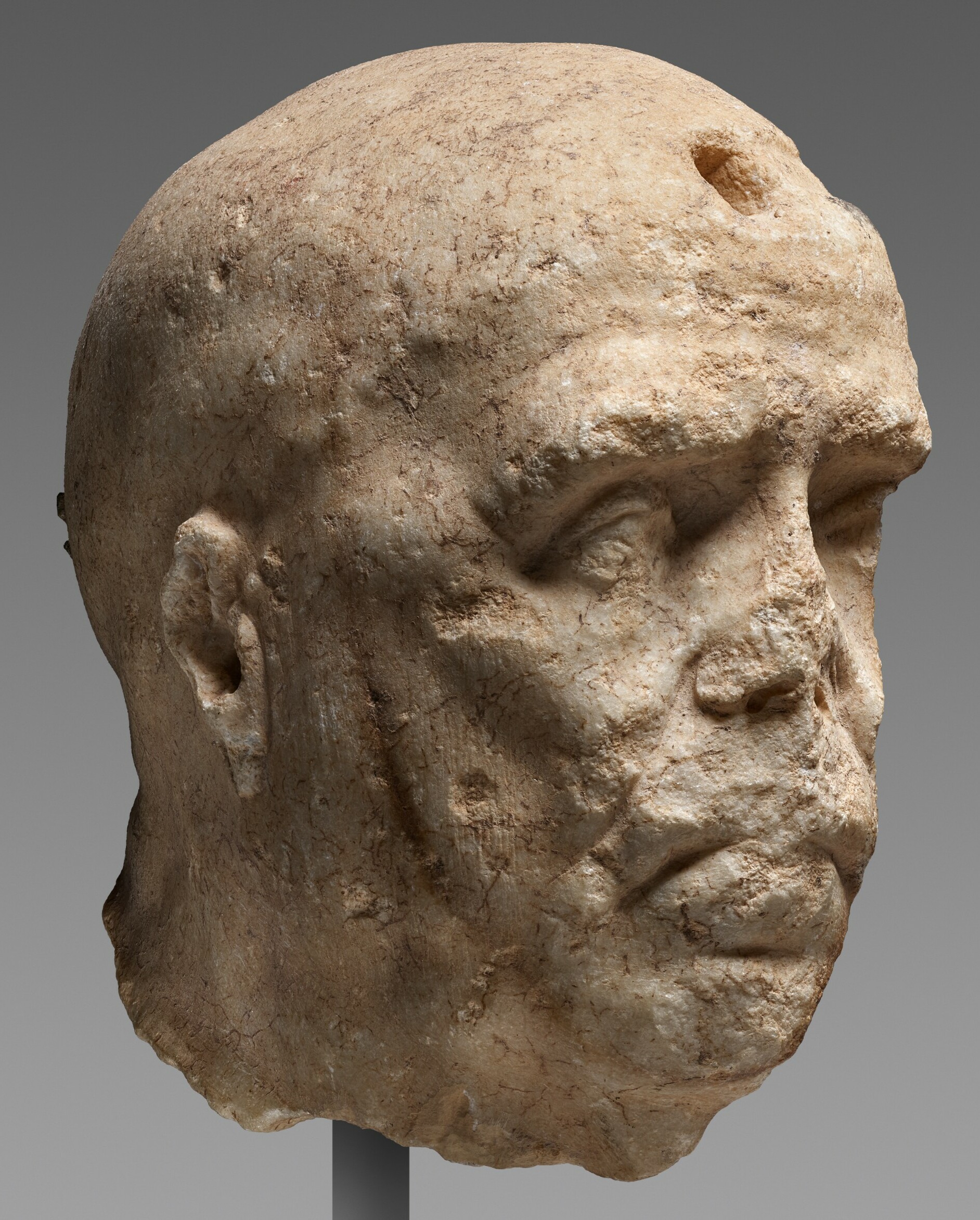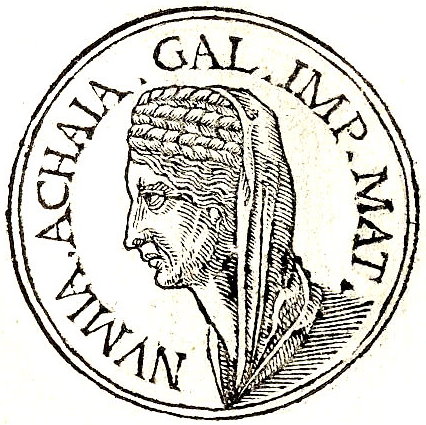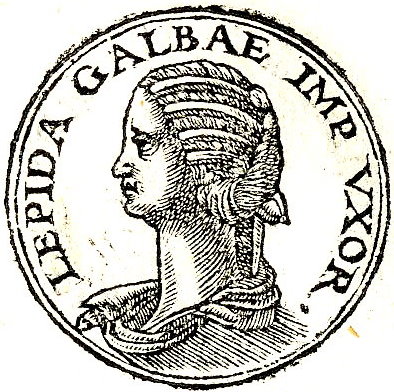|
Galba
Galba ( ; born Servius Sulpicius Galba; 24 December 3 BC – 15 January AD 69) was Roman emperor, ruling for 7 months from 8 June AD 68 to 15 January 69. He was the first emperor in the Year of the Four Emperors and assumed the throne following Emperor Nero's suicide. Born into a wealthy family, Galba held at various times the positions of praetor, consul, and governor of the provinces of Gallia Aquitania, Germania Superior, and Africa during the first half of the first century AD. He retired from his positions during the latter part of Claudius' reign (with the advent of Agrippina the Younger), but Nero later granted him the governorship of Hispania. Taking advantage of the defeat of Vindex's rebellion and Nero's suicide, he became emperor with the support of the Praetorian Guard. Galba's physical weakness and general apathy led to his rule being dominated by favorites. Unable to gain popularity with the people or maintain the support of the Praetorian Guard, Galba was mur ... [...More Info...] [...Related Items...] OR: [Wikipedia] [Google] [Baidu] |
Sulpicia Gens
The gens Sulpicia was one of the most ancient patrician families at ancient Rome, and produced a succession of distinguished men, from the foundation of the Republic to the imperial period. The first member of the gens who obtained the consulship was Servius Sulpicius Camerinus Cornutus, in 500 BC, only nine years after the expulsion of the Tarquins, and the last of the name who appears on the consular list was Sextus Sulpicius Tertullus in AD 158. Although originally patrician, the family also possessed plebeian members, some of whom may have been descended from freedmen of the gens.''Dictionary of Greek and Roman Biography and Mythology'', vol. III, p. 945 (" Sulpicia Gens"). Praenomina The Sulpicii made regular use of only four praenomina: '' Publius, Servius, Quintus'', and ''Gaius''. The only other praenomen appearing under the Republic is '' Marcus'', known from the father of Gaius Sulpicius Peticus, five times consul during the fourth century BC. The last of the S ... [...More Info...] [...Related Items...] OR: [Wikipedia] [Google] [Baidu] |
Year Of The Four Emperors
The Year of the Four Emperors, AD 69, was the first civil war of the Roman Empire, during which four emperors ruled in succession, Galba, Otho, Vitellius, and Vespasian. It is considered an important interval, marking the change from the Julio-Claudians, the first imperial dynasty, to the Flavian dynasty. There were several rebellions and claimants, with shifting allegiances and turmoil in Rome and the provinces. In 68, Vindex, legate of Gallia Lugdunensis, revolted against Nero and encouraged Galba, governor of Hispania, to claim the Empire. The latter was proclaimed emperor by his legion in early April. He was notably supported by Otho, legate of Lusitania. Soon after, the legate of a legion in Africa, Clodius Macer, also rebelled against Nero. Vindex was defeated by the Rhine legions at the Battle of Vesontio, but they too rebelled against Nero. On 9 June 68, Nero took his own life after being declared a public enemy by the Senate, which made Galba the new emperor ... [...More Info...] [...Related Items...] OR: [Wikipedia] [Google] [Baidu] |
Publius Sulpicius Galba Maximus
Publius Sulpicius Galba Maximus (fl. late 3rd to early 2nd century BC) was a Roman military officer and Senator who was elected Roman consul twice, and appointed dictator once. He fought in the Second Punic War and the First and Second Macedonian Wars. First consulship and the First Macedonian War A member of the Patrician '' gens Sulpicia'', Sulpicius Galba was the son of Servius Sulpicius Galba. Although he had held no previous curule magistracy, the crisis of the Second Punic War saw him elected consul in 211 BC, alongside Gnaeus Fulvius Centumalus Maximus. Entering his office on the Ides of March, both consuls defended the city of Rome against a surprise attack by the Carthaginian general Hannibal. Once the immediate crisis abated, and Hannibal retreated back to the south of Italy, provinces were allotted to the consuls. Although both were assigned to Apulia, the Senate, believing that Hannibal no longer posed a grave threat, decreed that one of the consuls only should ... [...More Info...] [...Related Items...] OR: [Wikipedia] [Google] [Baidu] |
Nero
Nero Claudius Caesar Augustus Germanicus ( ; born Lucius Domitius Ahenobarbus; 15 December AD 37 – 9 June AD 68) was a Roman emperor and the final emperor of the Julio-Claudian dynasty, reigning from AD 54 until his death in AD 68. Nero was born at Antium in AD 37, the son of Gnaeus Domitius Ahenobarbus (father of Nero), Gnaeus Domitius Ahenobarbus and Agrippina the Younger (great-granddaughter of the emperor Augustus). Nero was three when his father died. By the time Nero turned eleven, his mother married Emperor Claudius, who then Adoption in ancient Rome, adopted Nero as his heir. Upon Claudius' death in AD 54, Nero ascended to the throne with the backing of the Praetorian Guard and the Senate. In the early years of his reign, Nero was advised and guided by his mother Agrippina, his tutor Seneca the Younger, and his praetorian prefect Sextus Afranius Burrus, but sought to rule independently and rid himself of restraining influences. The power ... [...More Info...] [...Related Items...] OR: [Wikipedia] [Google] [Baidu] |
Lucius Calpurnius Piso Frugi Licinianus
Lucius Calpurnius Piso Frugi Licinianus (38–69)Tacitus, '' Historiae''Book I, 48."Piso, who was then completing his thirty-first year, had enjoyed more fame than good fortune." was a Roman nobleman who lived in the 1st century. His adoption by the Roman emperor Galba on 10 January 69 AD precipitated their joint murder by Otho, who had expected to be adopted instead. Otho then became the second emperor of the Year of the Four Emperors. Life Licinianus was a nobleman of the highest ancient birth. Licinianus was one among the sons of Marcus Licinius Crassus Frugi (consul 27) and Scribonia. Licinianus was a member of the ''gens Licinia'' by birth. His name indicates he was adopted into the '' gens Calpurnia'', probably by a relative of his brother-in-law Lucius Calpurnius Piso (consul 57). His paternal grandfather was consul and governor Marcus Licinius Crassus (consul 14 BC). Crassus was the adoptive son of consul and general Marcus Licinius Crassus (consul 30 BC), the gra ... [...More Info...] [...Related Items...] OR: [Wikipedia] [Google] [Baidu] |
Otho
Otho ( ; born Marcus Salvius Otho; 28 April 32 – 16 April 69) was Roman emperor, ruling for three months from 15 January to 16 April 69. He was the second emperor of the Year of the Four Emperors. A member of a noble Etruscan civilization, Etruscan family, Otho was initially a friend and courtier of the young emperor Nero until he was effectively banished to the governorship of the remote province of Lusitania in 58 following his wife Poppaea Sabina's affair with Nero. After a period of moderate rule in the province, he allied himself with Galba, the governor of neighbouring Hispania Tarraconensis, during the revolts of 68. He accompanied Galba on his march to Rome, but revolted and murdered Galba at the start of the next year. Inheriting the problem of the rebellion of Vitellius, commander of the army in Germania Inferior, Otho led a sizeable force which met Vitellius' army at the Battle of Bedriacum. After initial fighting resulted in 40,000 casualties, and a retreat of hi ... [...More Info...] [...Related Items...] OR: [Wikipedia] [Google] [Baidu] |
Gaius Sulpicius Galba (consul 5 BC)
Gaius Sulpicius Galba was a Roman senator, who was active during the reign of Augustus. He was suffect consul in 5 BC as the colleague of Quintus Haterius, succeeding Lucius Vinicius. Alison E. Cooley, ''The Cambridge Manual of Latin Epigraphy'' (Cambridge: University Press, 2012), p. 458 Galba was the son of historian Gaius Sulpicius Galba, son of Servius Sulpicius Galba, a praetor in 54 BC and conspirator against Julius Caesar. His younger brother was also called Servius Sulpicius Galba. Galba was twice married. His first wife was Mummia Achaica, with whom he had two sons, Gaius consul in AD 22, and Servius, the future emperor Galba. His second wife was Livia Ocellina. References * James H. Oliver"C. Sulpicius Galba, Proconsul of Achaia" ''American Journal of Archaeology'', 46 (1942), pp. 380-388 1st-century BC Romans Suffect consuls of Imperial Rome Gaius Gaius, sometimes spelled Caius, was a common Latin praenomen; see Gaius (praenomen). People * Gaius (b ... [...More Info...] [...Related Items...] OR: [Wikipedia] [Google] [Baidu] |
Livia Ocellina
Livia Ocellina was the second wife of Gaius Sulpicius Galba and the stepmother of the Roman Emperor Galba. Biography Her father was a Lucius Livius Ocella. According to Suetonius she was: :a very rich and beautiful woman, who however is thought to have sought marriage with Gaius Sulpicius Galba">nowiki/> Gaius Sulpicius Galbahim because of his high rank, and the more eagerly when, in response to her frequent advances, he took off his robe in private and showed her his deformity, so as not to seem to deceive her by concealing it. Galba was raised by her and took on the name Lucius Livius Ocella (rather than his birth name of Servius Sulpicius Galba) during the period prior to his assumption of the purple. Research There has been speculation that she was related to Roman empress Livia Drusilla. Ronald Syme has expressed that he does not believe that to be true. See also * List of Roman women The list below includes Women in Ancient Rome, Roman women who were notable for the ... [...More Info...] [...Related Items...] OR: [Wikipedia] [Google] [Baidu] |
Mummia Achaica
Mummia Achaica was the mother of the Roman Emperor Galba and his elder brother Gaius. She was the granddaughter of the consul Quintus Lutatius Catulus Capitolinus through his daughter Lutatia. Her father's name was Lucius Mummius Achaicus, which made her a great-granddaughter of the general Lucius Mummius Achaicus Lucius Mummius (2nd century BC) was a Roman Republic, Roman statesman and general. He was consul in the year 146 BC along with Gnaeus Cornelius Lentulus (consul 146 BC), Gnaeus Cornelius Lentulus. Mummius was the first of his family to rise to .... She married Gaius Sulpicius Galba. She died shortly after Galba's birth. References 1st-century BC Roman women 1st-century BC Romans Achaica Galba Mothers of Roman emperors {{AncientRome-bio-stub ... [...More Info...] [...Related Items...] OR: [Wikipedia] [Google] [Baidu] |
Gaius Julius Vindex
Gaius Julius Vindex ( 68), was a Roman governor in the province of Gallia Lugdunensis. Biography Following normal Roman procedures, his name Gaius Julius indicated that his family had likely been given citizenship under Gaius Julius Caesar, or perhaps Emperor Augustus or Caligula. He was of a noble Gallic family of Aquitania (given senatorial status under Claudius) and was one of the men belonging to a faction of Empress Agrippina, the mother of Nero. Vindex had taken part in a conspiracy against the emperor in 59. Vindex Rebellion In either late 67 or early 68, Vindex rebelled against Emperor Nero. Though the aims of his followers may have been more complex, Vindex, as a senator, probably had the aim simply of replacing Nero with a better emperor and ending the tyranny that plagued the empire. Rise of Emperor Galba According to the historian Cassius Dio, Vindex "was powerful in body and of shrewd intelligence, was skilled in warfare and full of daring for any great enter ... [...More Info...] [...Related Items...] OR: [Wikipedia] [Google] [Baidu] |
Aemilia Lepida
Aemilia Lepida is a Latin feminine given name that was given to the daughters of various Aemilius Lepiduses (), men belonging to the Lepidus branch of the Aemilia (family) that was founded by the Marcus Aemilius Lepidus who served as consul in . The Aemila Lepidas () who appear in Roman historians were principally known for their engagements and marriages, with those in the late Republic and early Empire related to the Julio-Claudian dynasty. Aemilia Lepida (1st century BC), wife of Metellus Scipio This Aemilia was daughter of Mamercus Aemilius Lepidus Livianus, wife of Metellus Scipio and former fiancée of Cato. Her daughter was Cornelia Metella, last wife and widow of Pompey the Great. Although Aemilia Lepida was engaged to be married to Cato the Younger, she in fact married someone else, leaving Cato to marry Atilia. In the words of Plutarch: When atothought that he was old enough to marry — and up to that time he had consorted with no woman — he engaged him ... [...More Info...] [...Related Items...] OR: [Wikipedia] [Google] [Baidu] |
Praetorian Guard
The Praetorian Guard (Latin language, Latin: ''cohortes praetoriae'') was the imperial guard of the Imperial Roman army that served various roles for the Roman emperor including being a bodyguard unit, counterintelligence, crowd control and gathering military intelligence. During the Roman Republic, the Praetorian Guards were escorts for high-ranking political officials (Roman Senate, senators and procurator (ancient Rome), procurators) and were bodyguards for the senior officers of the Roman legions. In 27 BC, after Rome's transition from republic to empire, the first emperor of Rome, Augustus, designated the Praetorians as his personal security escort. For three centuries, the guards of the Roman emperor were also known for their palace intrigues, by whose influence upon imperial politics the Praetorians could overthrow an emperor and then proclaim his successor as the new ''Caesar (title), caesar'' of Rome. In AD 312, Constantine the Great disbanded the and destroyed their ... [...More Info...] [...Related Items...] OR: [Wikipedia] [Google] [Baidu] |






